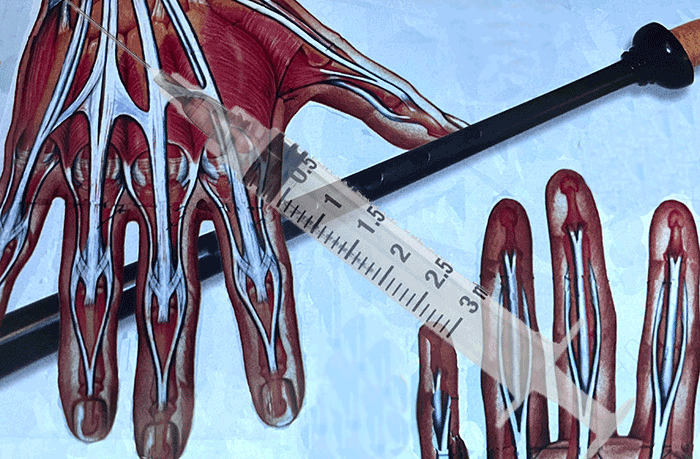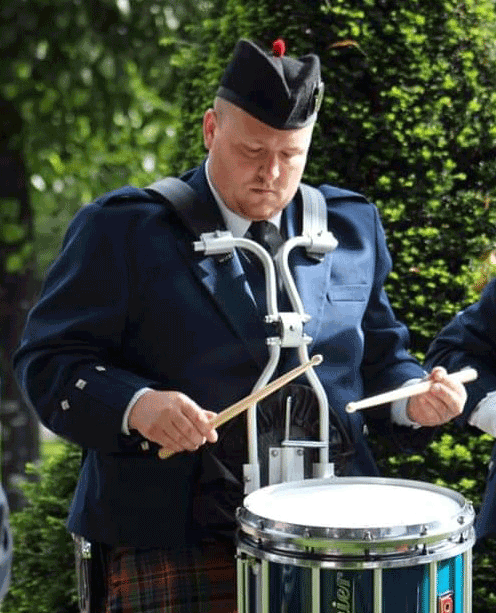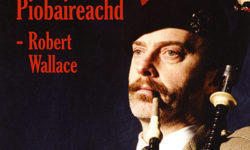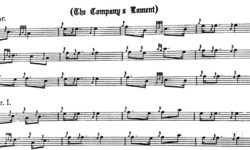
A request for information on focal dystonia from one of our Australian readers, Ken MacDonald, has prompted a good deal of interest and response, some already carried in our comments section but repeated here.
Clive Douglas: ‘Good to hear some positive comments regarding focal dystonia. I’ve suffered for over 30 years and I’ve never managed to overcome the condition. I noticed a woman called Ruth Chiles claims to be able to cure 95% of musicians that suffer from dystonia. I think she might be based in Granada, Spain. Best of luck Ken. I hope you manage to beat this horrible condition.’
Ruth Chiles’ website is here. She describes the condition thus: ‘It is a type of dystonia that affects a muscle or group of muscles in a specific part of the body (thus the term ‘focal’). It causes undesired and involuntary muscular contraction or twisting. Focal dystonia can affect the muscles of the eyes, mouth, vocal chords, neck, hands and feet.
‘It is commonly assumed that the cause of the problem is in the affected muscle or muscle group. However, whilst the symptoms manifest in the muscles, the root cause is a complex of erroneous neuronal connections. Musician’s focal dystonia can affect any part of the musician’s body in a way that impedes him or her playing their instrument.’
Bob Low offered this translation from M Tesniere who responded in French: ‘Roughly, M Tesnière is saying that he had a similar problem with dystonia on his left hand and that after many experiments, personal research and consulting with a friend who had lost his birl, he hit on a solution that worked.
[wds id=”9″]
‘That was to wrap a light elastic band between his thumb and each finger on his hand, strong enough to make him relearn how to move the fingers without totally preventing movement. He adds it’s important to exercise the muscles on the fingers.
‘I can add that my experience was similar. I totally lost my birl at age 31 in the space of a few months and didn’t get it back until I was 46 and had the internet to guide me. I didn’t play pipes more than six or seven times in total (family weddings mostly) in the intervening years because of it. I used a rubber band and taught myself to do tap/drag birls working against the resistance. Eventually I could play again and can now play adequately and in a conventional birl style.’
David Waterton-Anderson offered a more literal translation: ‘I had worries of dystonia in the left hand; I had not the possibility anymore to play with my middle and left index finger; they didn’t respond anymore as I wished it. After a lot of attempts and personal research I found a simple solution so that my brain recognizes these two fingers. My solution I put around the middle and left index finger, a small rubber band on each finger without compromising the fingering to play.
‘I advised a friend this solution he had lost the control of his birl finger. With the help of a small ring he recovered his game. It is important to make the exercises to our fingers as well as building the muscles to the finger that has a weakness.’
This conditions seems to be more widespread among pipers than is commonly understood. If any reader has has similar symptoms please share.
[wds id=”2″]
After an extensive search, Carnegie Mellon University is pleased to announce Miles Bennington as its new Drumming Instructor.
Professor of Music and Director of the band Andrew Carlisle said: ‘Miles will be providing regular individual instruction to the student drummers, directing the drum corps during rehearsals, performances, and competitions, and will take on a leadership role in building a cohesive and talented drum corps.
‘I am looking forward to working with Miles. He is clearly very passionate about teaching drumming. His background and experience as an educator along with his involvement with top level bands will be skills that will serve him in good stead at Carnegie Mellon. I have no doubt that he will be an asset to our students, the University and its Pipes and Drums.’

Miles Bennington is a professional snare drummer and special education teacher from Pittsburgh, Pennsylvania. He began pipe band drumming at the age of 16 under the instruction of his father, James.
That same year, Miles joined Jimmy McIntosh’s Balmoral Highlanders Pipe Band. The following season, Miles joined the Grade 2 Great Lakes Pipe Band where he helped propel the drum corps to multiple awards including the US Open Championships, Canadian Championships, and North American Championships.
Miles later joined the Grade One Toronto Police Pipe Band where he contributed to more titles such as the North American Championships and PPBSO Champion Supreme. He has also been the instructor of the North Coast Pipe Band in Kent, Ohio for several years. Miles is currently a drummer with the Grade One 78th Fraser Highlanders Pipe Band.
He said: ‘I am excited for the opportunity to work with the Carnegie Mellon University Pipes and Drums. Having grown up in the greater Pittsburgh pipe band community, I’ve been able to observe firsthand what a massive impact Carnegie Mellon has made in our community here and abroad.
‘The opportunity to collaborate with someone as esteemed as Andrew on the development of the program and its members is truly an honor. I look forward to diving in and helping to continue developing an already prestigious program.’
-
 Purely Piobaireachd: Robert Wallace£7.00
Purely Piobaireachd: Robert Wallace£7.00 -
 Selected Piobaireachd for the Beginner£2.50
Selected Piobaireachd for the Beginner£2.50 -
 Practice Chanters – Long or Standard PolyPrice range: £49.00 through £69.00
Practice Chanters – Long or Standard PolyPrice range: £49.00 through £69.00
















I took ten years off from piping 2006-2016 (I’ve playing seriously since 13 and I am now 50) and can say that when I resumed piping seriously under Jack Taylor and Iain Spiers I’ve had the same issues on my left hand like Duncan had mentioned and always felt embarrassed playing the big pipe in front them as I was never sure if my crunluaths or embare movements would ripple or go on strike. I’ve largely overcome this but it sometimes crops up.
Oddly enough when I play heavy MSR’s or 2/4 Marches I actually had my right start hurting after 20 minutes. I never had it with piobaireachd no matter how long the piece (Earl of Antrim for example). I went off finally to see a specialist in Manhattan who treats members of the New York Philharmonic. He was intrigued with pipers so he asked me to bring both my pipes and practice chanter. He concluded after playing in his office for about 20 minutes that the complexity of our technique and the constant gripping of the chanter will contribute to nerve problems and must be given adequate rest. Violinists he noted have similar symptoms and pain. It’s evident in mostly older adults after 45 or so he says.
I now try to rest so instead of playing single day for an hour or two, I play the pipe four times a week and the rest on the practice chanter.
We’ll see!
I have been suffering from focal dystonia since June 2019. It started as I was gearing up for the silver medal contests and I began to lose dexterity in my left hand (specifically crunluaths) in the months before the major contest. Then my E finger became so tense with excess pressure, and my F finger would curl up away from the chanter, to a point where I couldn’t cover the holes any time I’d try to play. Similar to Dave, I would get random F gracenotes when I didn’t want them and my E finger would slide off the hole when I tried to play D. I’ve been diligently trying to find a solution and have tried electro-acupuncture, physiotherapy, sports psychology, EMDR, P-DTR, elastics, playing with a glove, taking a break, etc. EMDR had the most immediate impact – I went from having symptoms just by touching a chanter, to being able to play simple tunes without symptoms. I then bought a set of smallpipes and that has helped me tremendously – having an instrument that is a go-between or a stepping stone from the practice chanter to the smallpipes has allowed me to ease my way back into things without too much stress. I’m still working my way through it and have recently started talking to Stef Burns about it and she has provided some excellent insight into why this started and how the brain creates ‘memories’ and latches onto them to create these symptoms. My biggest takeaway is changing my mindset towards the malady and towards my piping – it’s really about being in a state of zen more than anything. As soon as I start thinking about the issues and symptoms, or second-guessing my playing or ability, I will immediately get symptoms. Good luck to those who suffer from it – stay positive! We’ll figure it out!
Dupuytren’s Contracture is another problem that affects finger movement. In the piping community it is also known as ‘MacCrimmon’s Curse’ and even ‘Claw Hand’, where fingers increasingly bend and cannot straighten. I have it in the little and adjacent fingers of the right hand: The little finger and palm of the right hand were operated on, in April. Here’s a video of the hand in recovery, a month on – not a pretty sight then, but the wound has healed and I am back playing the pipes, but no birls possible yet !
https://www.youtube.com/watch?v=Duz2tLJ0eOU (not sure if the link will work, but it’s not for the squeamish !)
Musician’s Focal Dystonia was a subject that Norman Matheson wrote on and it appeared in The Piping Times when the PP editor was in charge. Personally I have had it and think I still have a touch of it and it seems to more than a muscle complaint. For me it occurred almost overnight back in 1982. On the practice chanter there was little or no problem, but when playing the bagpipe the problem emerged with a vengeance and to some extent, I have overcome it. It occasionally revisits me! The problem manifested the second finger of my left hand—the F finger and this had the effect of me being unable to lift it when commencing the ‘dare’ movement. I tried different hand positions and this persisted for years. I could in fact move my finger(s) but for some reason when playing that particular movement and associated movements, such as embari and chedari, there was huge pause or hiatus before the movement. There was no pain involved and when playing light music, when playing a doubling of E for example, using that F finger, there was no problem.
I was assured that it was not a muscle condition such as repetitive strain injury. Reading the detail which Norman Matheson wrote, did help in understanding what might have been the cause. It has been called The Pipers Palsy, but it obviously affects musicians and violinists are affected apparently. Of course they don’t play birls! Currently I have bits of problems with this birl business but that is not a dystonia effect. There have been very well known significantly successful pipers with this condition and it seems that on a good deal of occasions it affects the crunluath movement and in that cluster of notes, particularly the ‘dre’ movement. To overcome this it seems that they slightly alter the rhythm of the movements, with really limited success. For some at least, rest or leaving off playing for a substantial period, which is extreme for a professional musician, seems to be one of the answers to the problem.
Hi all. Interesting malady this focal dystonia…I knew I had something wrong but I didn’t know what it was. I read an article in an NZ mag about a piper that had it. It sounds like there’s a few different symptons. For me it was my F gracenote finger that would either curl itself involuntarily around the chanter and stay there or repeat F gracenotes when I didnt want them. Then it would just cramp up and not go anywhere – more so when I had some playing stress going on. It was very frustrating but I managed to fix it by learning to be a little more relaxed especially at competition time. I also taped the annoying forefinger to try an stop the spasm. After a while it dissappeared. I think I also gripped the chanter to tightly which didn’t help.
Hi Dave, when you say you taped the forefinger, what do you mean by that?
I put athletic tape around the knuckle joint to sort of splint it and trick it into thinking it was new again…I have numerous finger issues all stemming from hard rock climbing and gripping snow an ice tools….or over gripping as they case may depending how scared you might have been…of course the crunluath movement brings out any finger weakness whatsoever …playing my electric chanter as helped enormously…gd luck!